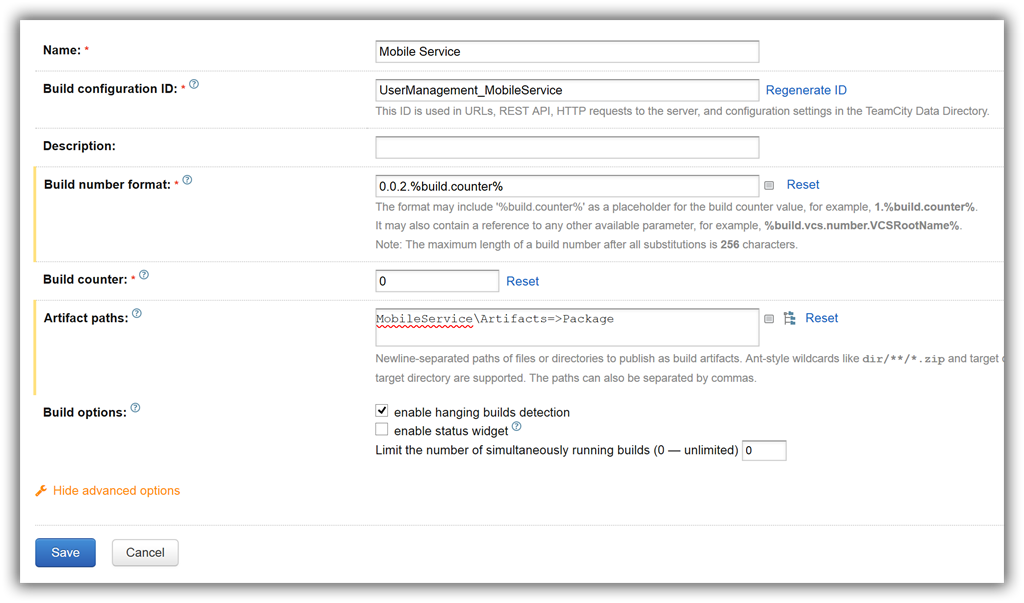
Build configuration IDīuild configuration ID: Identifies the Build configuration in the system. The following figure is an overview of the basic configuration of Build: In this article, we will introduce the basic configuration in Build in detail. Thank you for reading this post.Created a project HelloApp in TeamCity, and created a Build called HelloAppDailyBuild in this project to compile the demo program.
Teamcity artifact paths manual#
integration tests) but we can also add build configurations that correspond to manual acceptance steps (e.g. From here, we can add more build configurations between the deployments that perform automatic tests (e.g. So this is it, a different way to model the deployment pipeline using build chains. In any case, it gives a nice build chain: DTAP build chain This has pros and cons, so you might want to think about before implementing it. This means we can’t deploy to Production unless we have first deployed to Acceptance and we can’t deploy to Acceptance unless we have first deployed to Testing. for production: Making Production depend on Acceptance This is done by adding additional snapshot dependencies, e.g. We can also configure Acceptance to depend on Test and Production to depend on Acceptance.

The Commit Stage is already configured to use SemVer, so we’ll re-use that number in the deploy configurations: Using the same build number across all deployments One more trick I like to do is to see the same build number across all build configurations. In the end, I can see this screen on the Commit Stage of the build: Deployments of Commit Stage I can further clone this build configuration for Acceptance and Production and set the env configuration parameter accordingly. Now I’ll extract a project template out of this build configuration, so that I’ll be able to reuse it for all environments of the DTAP: Extract template out of Deploy Stageįrom there, I can rename the old “Deploy Stage” into “Deploy to Test” and set its env configuration parameter to test. I’ll also change the build type into a deployment project: Changing Deploy Stage into a Deployment build configuration First, I’ll change the environment configuration parameter so it’s not a prompt anymore: Changing the env parameter to normal instead of prompt Now that this is done, I’d like to use one build configuration per DTAP environment. This creates a build chain between the Commit Stage and Deploy Stage, which is visually more user friendly: Visualizing build chain Adding the snapshot dependency is the next step: Adding snapshot dependencyĪnd configure the artifact dependency to use the artifacts from the same build chain: Using artifacts from the same build chain

We just need to add the VCS root because TeamCity allows us then to use snapshot dependencies. We’re only using the immutable artifacts generated during the commit stage.

Teamcity artifact paths code#
Note that we’re still not using anything from the source code during deployment. This is necessary to allow for snapshot dependencies: Attaching VCS root to deploy stage Then, I’ll attach the project’s VCS root to the Deploy Stage as well. The inline script for deployment needs to be adjusted accordingly. This allows to clear only that subfolder when clearing artifact paths. In this post, I’ll modify that deployment pipeline to use snapshot dependencies and project templates.įirst, I’ll modify the artifacts so that they’re all stored in a subfolder named artifacts. I had mentioned back then that it’s possible to set it up in a different way, which makes it is easier to visualize the deployment pipeline across all environments. In a previous post, I had configured a deployment build configuration in TeamCity.


 0 kommentar(er)
0 kommentar(er)
